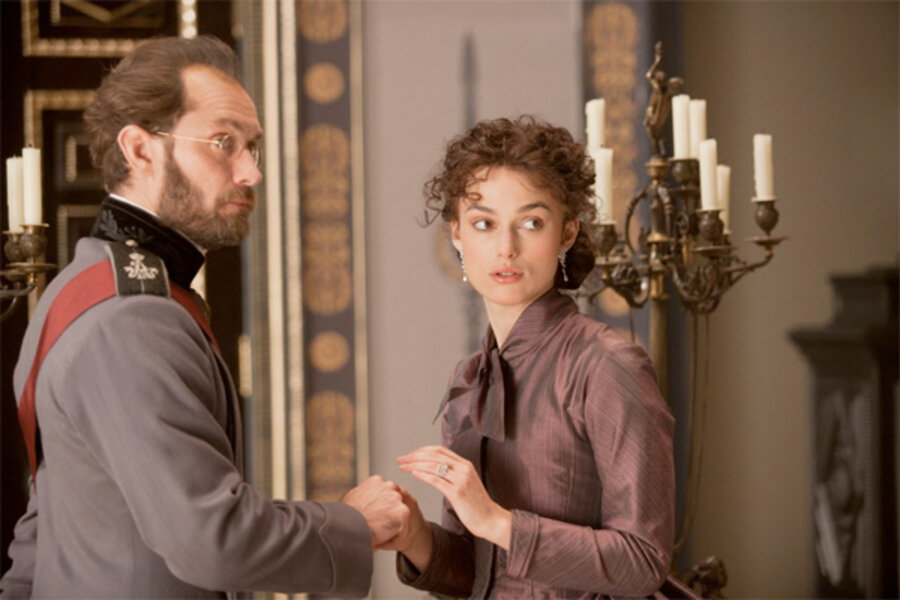Anna Karenina: Keira Knightley is literature's tragic heroine
Loading...
Thomas Mann, in an essay on “Anna Karenina,” wrote that “Tolstoy loves Anna very much, one feels that. The book bears her name; it could bear no other.” One of the many, many things wrong with Joe Wright’s “Anna Karenina,” starring Keira Knightley as literature’s most famous adulteress – take that, Emma Bovary! – is that one never feels the love. It’s a conceit in search of a movie. It could just as easily have been titled “Décor.”
The conceit is that old chestnut: All the world’s a stage. Wright, alas, takes it literally. Most of the action takes place in theatrical settings with painted backdrops. Military banquets and balls, intimate encounters, even steeplechase races, are all given the proscenium treatment.
Passionlessly married for nine years to the ramrod imperial minister Karenin (a distinctly undashing Jude Law), Anna allows herself to be seduced by the handsome cavalry officer Count Vronsky (Aaron Taylor-Johnson). Closed off from her 8-year-old son (Oskar McNamara) and unsparing husband and ostracized by the tongue-wagging aristocracies of St. Petersburg, Anna becomes increasingly isolated, even from Vronsky.
It was this isolation, I suppose, that prompted Wright to position so many of Anna’s scenes alongside drop curtains and catwalks. By contrast, the sequences involving Levin (Domhnall Gleeson), the gentleman farmer whose marriage to pretty princess Kitty (Alicia Vikander) represents the triumphal amorous counterweight to Anna’s rue, are mostly opened up.
This is the kind of conceptual schema one might expect from a faux visionary like Baz Luhrmann (“Romeo and Juliet,” “Moulin Rouge!”) and not the director of “Atonement” or that fine Jane Austen adaptation “Pride and Prejudice” (both starring Knightley to far better advantage). To compound the disappointment: Tom Stoppard wrote the script, although reportedly the dunderheaded theatrical conceit was not his doing. It should not be necessary for Anna to be encased in dollhouse-like interiors in order for us to experience the intensity of her soul-deadening sorrows.
In any case, those sorrows come across as tepid, due in part to the fact that the bland, 20-something actor playing Vronsky, who bears a vague resemblance to a mustachioed Justin Bieber, seems more boy toy than heartthrob. If the settings are stagey, so is much of the acting. Often deliberately arch and formal, the performers have been instructed to emphasize the overwrought theatricality of Anna’s disapproving social set. What doesn’t emerge is Anna’s passion. Panic is more like it.
Knightley follows a long line of divas who have played Anna, including Greta Garbo (twice) and Vivien Leigh. Her performance here is itself a species of décor: all outward flourish. There’s no grandeur to her misery. (She’s also too thin to be playing a 19th-century Russian woman of means.) Without that encompassing sense of ardor, which in Tolstoy encompassed the world, what is this “Anna Karenina” really about? It’s to the filmmaker’s credit, I suppose, that, unlike most of the other movie adaptations, the Levin-Kitty confab is at least given lip service. But these two late-blooming lovebirds stand for sanity, not ecstasy. The molten core of this material is, or should be, ecstasy and its dissolution. Grade: C- (Rated R for some sexuality and violence.)







